RadkoTichavsky is a Czech born Mexican Agrohomeopath. He is a co-founder and director of Instituto Comenius in Mexico and author of Handbook of Agrohomeopathy, 2007 (Spanish) and Homeopathy for Plants, 2009 (Spanish), Organon de la Holohomeopatíaand creator and teacher of Holohomeopathy.
Agrohomeopathy Course!
RadkoTichavsky is now offering a one semester virtual course in Agrohomeopathy (in English). You can learn how to define and analyze holons and how to repertorize the specific homeopathic treatment beyond just disease or pest names. You can find out more here: www.icomenius.edu.mx
NEW BOOK:
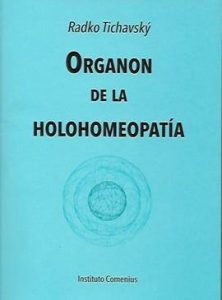
Greeting Mr. Tichavsky,
I have a glorious maple tree that has “black tar fungus” for several years now. Here’s an article from Michigan State University on the Black tar Fungus:
https://www.canr.msu.edu/news/black_polka_dots_on_maple_tar_spot
Although this is supposed to be harmless, it affects our tree by stunting the color changes that normally take place. So instead of the intense reds, yellows, oranges, etc. – it goes from green to brown. Most leaves fall when still green!I tried Arsenicum album 200C in water dosing for a season, but no changes happened.
I’m in Michigan – we are Grow Zone #5. West Bloomfield zip code 48323. We have very cold/snowy winters, wet springs, mostly hot summers.
Do you have any suggestions?
Thank you
Kathleen Slonager
RadkoTichavsky:
Dear Kathleen,
The Black tar fungus Rhytisma sp. in Acer pseudoplatanus is associated directly with the concentration of atmospheric Sulphur dioxide. It is a condition which is debilitating the metabolism of the trees, but once the infection is disseminated, the concentration of SO2 is irrelevant, because the fungus spores are scattered by the wind and spread from the fallen leaves, causing constant reinfections, both in the diseased tree and in the adjacent healthy trees.The Maple is a hyperaccumulator of silica, zinc and in smaller part also of copper, three very important elements for defense against fungus. The initial condition of toxicity of Sulphur is the cause of diminishing disposability of silica in the Acer spp..
There are different strategies to fix the problem of the fungus:as prevention in conurbated areas or with high inflow of air contaminated by Sulphur dioxide you can apply Zincummetallicum 6 CH and Cuprum metallicum 6 CH in irrigation and foliarly. In case of already infected trees the holohomeopathic remedy can vary according to the availability of biotic resources in each holon. I will mention the most common.Several lichens have the capacity not only to inhibit the fungus but also to increase the adaptation of the trees to debilitating conditions and supplement lack of copper and zinc, for example Lecanoramuralis, Lecanoraconizaeoides, Xantoriaparietina among others. Artemisia sp. is also hyperaccumulator of the copper and zinc and helps the trees to adapt to the environmental stress.
A typical formula of homeopathic intervention in sick trees of Acer pseudoplatanus is Silicea terra 12 CH, alternated with Lecanoramuralis 12 CH with Ricinus communis oil as a coadjuvant in the proportion of 1:100 to the homeopathic remedies.
[hr]
Dear Sir,
Our major problem for small cardamom cultivation is Shoot Stem and Capsule Borer (ConogethespunctiferalisGuenee (Lepidoptera: Pyralidae). The area comes under the high altitude western ghats, on the eastern side of Kerala, commonly known as high-ranges of Idukki District.Now it is severe summer here, where the temperature during day time hovering around 32-34 degreecelsius. For small cardamom, the ideal temperature must be between 26-29 degreecelsius.
The shootstem capsule borer issue is throughout the year, but increases during the periods when rain and sun shine are intermittent or during the beginning of rainy season etc.Here the next rainy season starts from mid-June, which we call South West monsoon.
Can you please suggest some medicine and its dosage and frequency of application?
Thank you
AbrahamIdukki Dt., Kerala
RadkoTichavsky:
Dear Abraham,
In the case of Conogethespunctiferalis in cardamom cultivations it is important to attract its natural enemies such as for example several types of Trichogrammasp..You can apply Periplaneta 6 CH with palm oil in the proportion 1:100 as a coadjuvant. You can also use Tegenariadomestica spiders mather tincture dynamized to 6 CH potency to attract the enemies of C. punctiferalis. The response of the holon is relatively fast, but if other substances have been previously applied as agrotoxics to which the pest becomes resistant, a considerable time will be required before the populations of natural enemies that have been suppressed along with the pest are re-established and form a correct balance in the holon.
Seemingly harmless substances such as Bordeaux mixture frequently used by ecologic agriculturtural producers eliminate spider populations useful in natural pest control and facilitate the development of chronic C. Punctiferalis affection. As always, any application of synthetic substances must be carefully re-thought and its short and long term consequences must be foreseen.
[hr]
Dear Mr. Tichavsky,
Ash Die-Back (Chalara fungus) is destroying many Ash Trees in the UK.
There is some information about it on the UK Forestry Commission website:
As a previously practicing homeopath I wondered if there is some homeopathic approach.I have noticed local authorities are already felling large numbers of mature Ash trees to mitigate the risk of them falling on people once they start to die from ‘Chalara’.
Thank you
Nigel Hargreaves
RadkoTichavsky
Dear Nigel,
The ash dieback affects ash trees (Fraxinus excelsior) and is caused by the ascomycete fungus Hymenoscyphusfraxineus. The degree of pathogenesis of the fungus depends on the vitality of the tree (including the influence of the degree of environmental stress it presents) and as recently learned, also depends on the presence of some micoviruses, specialized in parasitizing the fungus Hymenoscyphusfraxineus. These can weaken in important way the pathogenesis of the fungus. The antagonistic role of the fungus Mycosphaerella sp. in relation to Hymenoscyphusfraxineus has also been studied. It must be taken into account that the fungi always act in a coordinated way, in the form of clusters called fungal assemblages, and for this reason the strategies directed towards a single species of fungus, in this case Hymenoscyphusfraxineus, have very little result.
In holohomeopathic treatment a “live bionosode” is used. It’s a special way of preparingbionosode in solution serum, with a last dynamization made in alcohol at 30%, before replicating the amount of remedy in water and applying it on the trees. The live bionosode is a way to keep the virulence of the fungus more active compared to a “normal” homeopathic preparation but without the possibility of the fungus replicating.This strengthens the defense capacity of the trees by developing their systemic resistance to this fungus. For this, material extracted from trees sick fromHymenoscyphusfraxineus is used.It has to be taken from trees with light symptomatology in context of very ill or dead trees.The bionosode is also used in the potency 6 CH, to stimulate the action of mycoviruses. In addition, Aesculus hypocastanum (made of bark) containing aesculetin, an antifungal compound which complements and reinforces the defense of F. excelsior with Aloe vera sap as coadjuvant has to be applied.
[hr]
Hello Sir,
I’m attaching pictures of tomatoes at our home. This past year the size is very small and there seems to be a problem with the leaves.We grow them in pots. Can you make a suggestion?
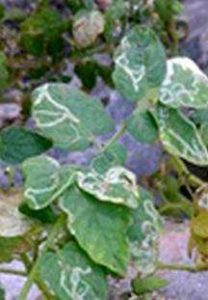
Thank you
Siddharth
RadkoTichavsky
Dear Siddharth,
The size of fruits in the tomato is mainly determined by the genetics of each cultivar on the one hand, and on the other hand by potassium input. It would be necessary to determine if the small fruit of your tomatoes was caused by a cross-pollination with another species of wild tomato that produces naturally smaller fruits, or if it is simply due to low availability of potassium.
As for the lesions in the leaves, it is due to Liriomyzabryoniae, a small fly that oviposits the leaves in which transparent larvae are developed that feed on the leaf producing a decrease of photosynthesis, premature fall of fruits and low harvest. They also introduce fungus, bacteria and viruses that can affect the growth of the plant and fruits. The homeopathic remedy that we use in the control of this problem is Tilandsiausneoides 6 CH alternated with Coccinellaseptempunctata 6 CH and Betula lenta 6 CH that contains methyl salicylate, a kairomon that attracts natural enemies of L. bryoniae. The remedy is made from the mother tincture taken from the bark of the tree, and it is applied in the 6 CH potency.
Microdoses of Urticaurens in the form of fermented hydrolat diluted in a ratio 1:40 once a week can help resolve nutritional deficiencies in tomato and increase plant vigour and fruit size.
[hr]
Dear Dr. Tichavsky,
Last year we moved to St. Paul Minnesota (U.S. Zipcode55133 ) Our lettuce crop was mostly spoiled by Downy Mildew. Both the top and bottom of the leaves were discolored yellow and then brown. We want to plant again and wondered if there was a holistic way to prevent the same problem. Winters are frigid with lots of snow and summers range from warm to hot and humid. We get about 32 inches of precipitation a year. We’ve always used homeopathy for people and pets.
Thank you
Elizabeth Walker
RadkoTichavsky
Dear Elizabeth,
Downy mildew is a generic name for different species of fungus which can vary according to the species of lettuce.Also, the susceptibility of the plants to this fungus can vary according to the hybrid of lettuce used. There are three important elements to fungus control in lettuce: Sulphur, Silicea, and Zinc, and all three have hyperactivity in the lettuce.To ensure a good result in the plants is important to alternate crops in the same crop.For example, if one year lettuce is sowed, the other cycle is to sow leguminous or cruciferous plants, and next solanaceas, then umbelliferous and liliaceas and only then continue with the lettuce again.Each plant has different nutritional requirements but at the same time also produces metabolism in its aerial part and in the roots that leave biochemical traces in the soil. These traces predispose to the presence of different pathogens that are not shared by different families of plants.This principle is the basisfor the effectiveness of crop rotation. Silicea 6 CH, Zincummetallicum 6 CH can be used with sap of Aloe vera as an adjuvant in hot weather or Helianthus annuus oil to control the downy mildew which will appear in minimum expression if the rotation is done correctly.


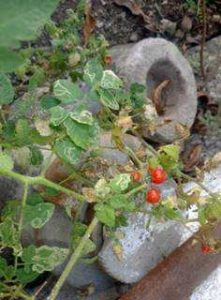
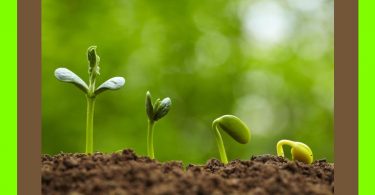
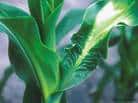
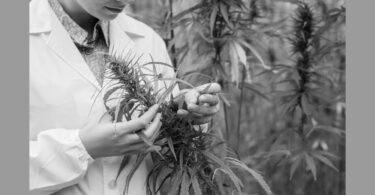
Dear Mr. Tichavsky,
For the last few years some of the flowers of my white lilac have been brown instead of white. The flowers don’t even start out as white – they are brown right from the beginning in the spring. It is getting worse every year. We live in the Pacific Northwest of the US, about 30 miles south of the Canadian border (zip code 98229). What homeopathic remedy do you think might make it healthy once again? Thank you!
Also, I’d like to know how to send you a photo of my lilac tree.
Hi Linda,
I’ll submit your question for the May issue of the journal. You can send the photo to : [email protected] Please let us know the approximate age of the tree if you know it.
Please let me know the best trees to plant outside a house bordering a motorway to filter out the pollution. The house in question is in Cyprus so it would have to be a species indigenous to the area. It is rumoured that the regular fir trees seen here create their own toxins so I was wary of rushing in with going ahead with planting them. Thanks for your thoughts on this, best wishes, Elizabeth Adalian